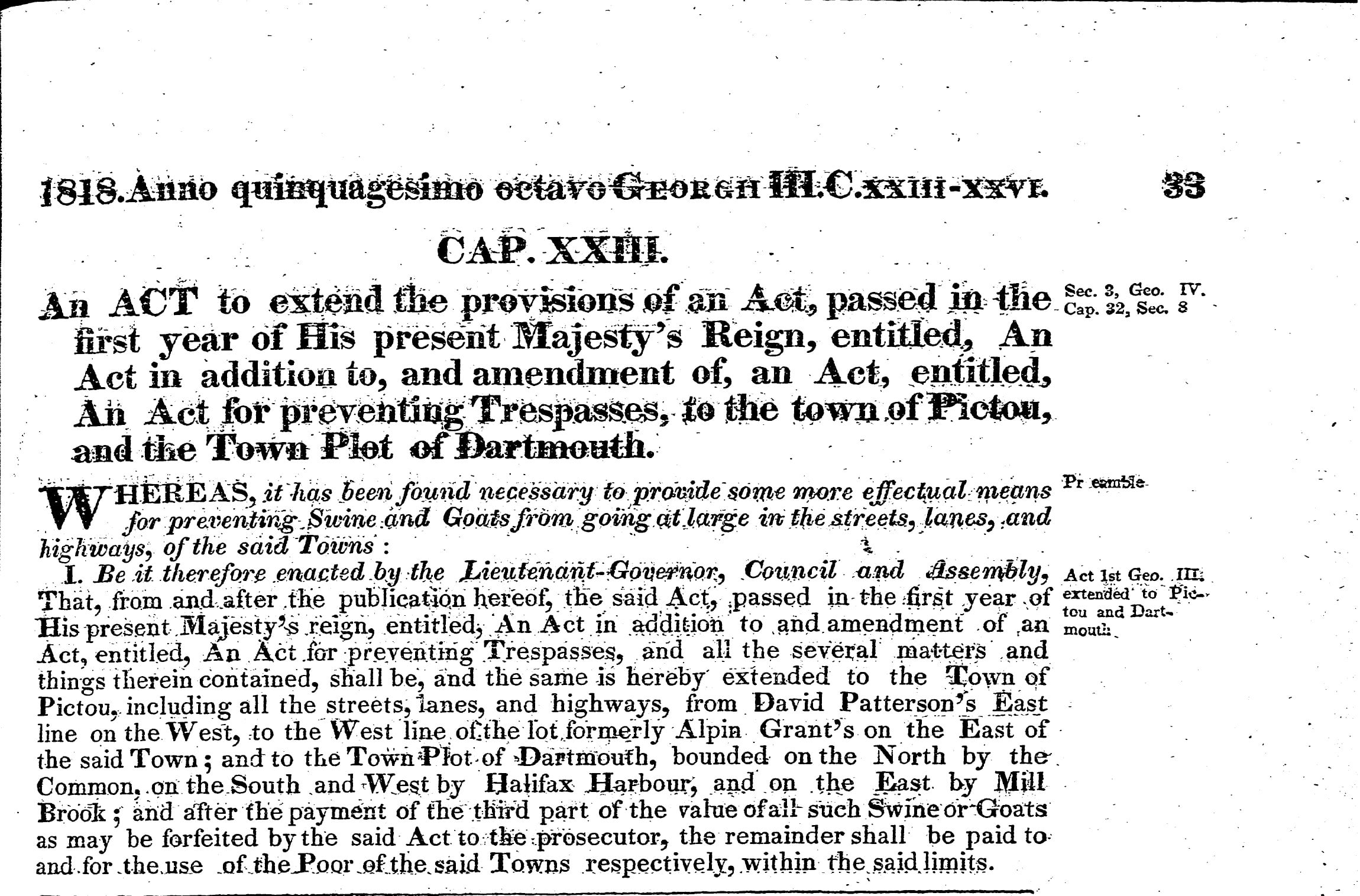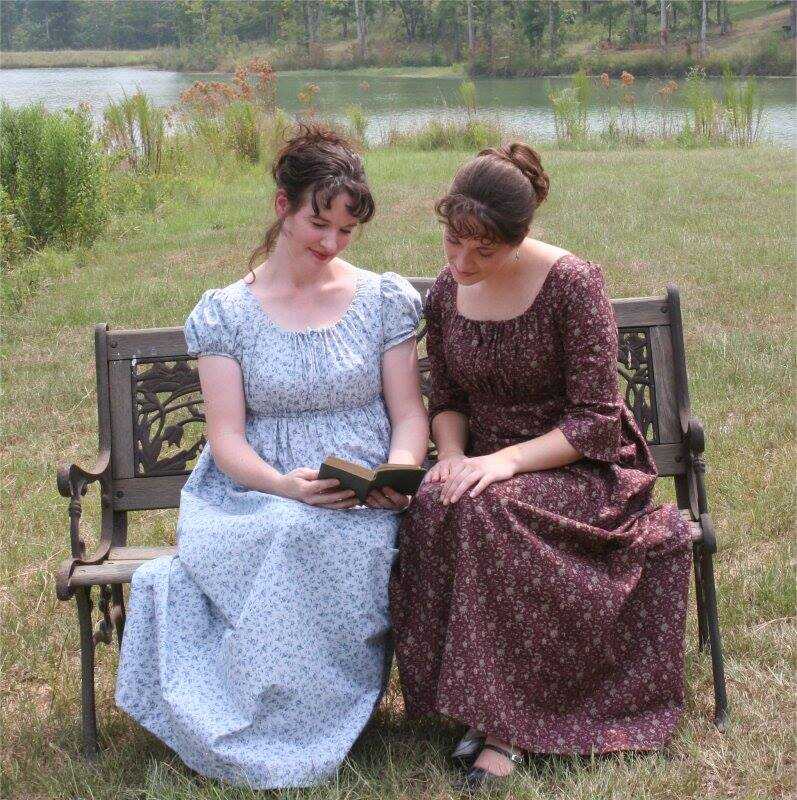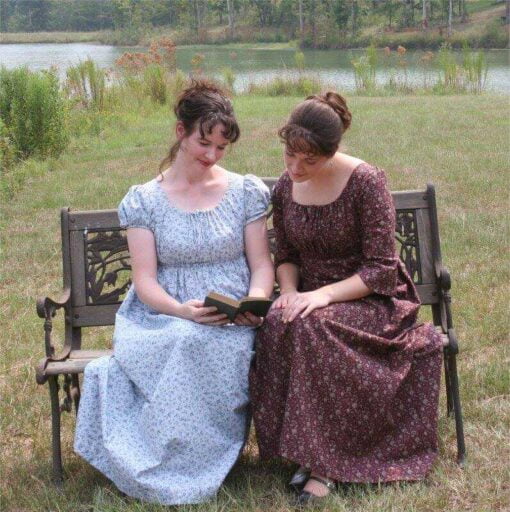Among famous men in our neighborhood about this time was James Gordon Bennett, who later founded the New York Herald. Some biographies state that he emigrated from Scotland in 1819, and first earned a scanty livelihood on Halifax journals. But he assuredly came earlier, for he taught school just outside Dartmouth as early as 1816, and remained at least two years.
In January 1819, the first use was made of the snow-covered trail from Cobequid Road to Dartmouth. Newspapers of that date reported that several sleds with produce for Halifax, were coming in by the new road and down over the Dartmouth Lakes. The landing-place is thought to have been at Banook Avenue, because that street was long known as “the winter road”.
Letters advocating the commencement of the Canal project appeared frequently that winter. One writer suggested that a large dam be constructed “at the end of the swamp behind the church”. In his opinion such a dam would raise the level of the two lakes so that there would be water communication to Lake Charles without need of any locks. A series of locks from the dam to the harbor would then complete the Dartmouth end.
(Evidently most of the land eastwardly from Christ Church was, at that time, still in its primitive state).
Another correspondent pointed out that as the passes from lake to lake were fairly level, a sort of ship-railway could be made so that boats of 8 or 10 tons could ply with cargoes directly from Halifax harbor to the Bay of Fundy.
“’Tis in vain we have elegant public buildings if the Canal project is not made effective, and the trade of Halifax will decline to a very low ebb”, concluded the writer.
(This was a reference to costly Province House which had just been completed and opened for the session of 1819).
About that time another petition to the Lieutenant-Governor from John Skerry and William H. Worthy stated that as the Roman Catholics in Dartmouth were then very numerous, they found it both inconvenient and expensive to attend church at Halifax. The petitioners therefore made application for any vacant town-lots which His Lordship would deem sufficient for the purpose of a church, a priest’s house and a churchyard.
Lord Dalhousie replied as follows:
“I am fully disposed to comply with the request of this petition, but having made inquiries as to the number of Catholics on the Dartmouth side, I do not find that there are anything like a congregation and besides that I do not wish to see at present any new establishment to take away from the highly respectable church of Bishop Burke”.
In May, a vein of limestone was discovered on Mr. Silver’s farm at Preston by W. H. Worthy of Dartmouth brickyard. He thought there was not the least doubt but that coal existed under the bed of Salmon River below the lime-quarry.
Road grants that year included £140 for the road from Kennedy’s towards Fletcher’s. John Munro was Commissioner. The sum of £10 was voted for the winter-road to Dartmouth Lakes with John D. Hawthorn listed as Road Commissioner.
The latter amount was in response to a petition signed by Charles Reeves, John Kennedy, Jacob Kuhn, John Hawthorn, James Bissett, Robert Hartshorne, Seth Coleman, Andrew Malcom, Joseph Findlay and Frederick Major, wherein they stated:
“That your petitioners at a great deal of labor and expense to the amount of £30 paid in cash, have opened a complete road between Lake Charles and Dartmouth Lakes being a distance of about one mile, which work has been done in the last 3 years; that this road is now very much traveled, and all teams from Cobequid travel on this road; that your petitioners ask for no remuneration but that the sum of £30 will make a very excellent road.”
Andrew Malcom lived in town-block “H” on escheated land herenow stands the Dartmouth Fire Station. Evidently this location was then considered as being out in the suburbs, as is inferred from his petition of 1819:
“To His Excellency the Rt. Hon. George, Earl of Dalhousie,
The petition of Andrew Malcom respectfully sheweth that your petitioner from Thurso, County of Caithness, Scotland, has been in Dartmouth this 2 years last past, and has lately been Granted a Town lot in Dartmouth from your Lordship, on which he has already built a house and fenced it in, and owing to the lot your Lordship was Pleased to Grant, being in the Back part of the Town he is now desirous of obtaining another lot, nearer the most Public part of the Town, for the purpose of erecting a shop to carry on the Cart and Plough Manufactory and such improvements as will be satisfactory to your Lordship,
“And as in duty bound your Humble Petitioner will ever Pray
(Sgd.) ANDREW MALCOM”.
At Kensington Palace in London that year was born on May 24th, the Princess Victoria, daughter of the Duke of Kent.
Of two Dartmouth weddings performed by Rev. Charles Ingles in 1819, one was that of Maria Marshall daughter of Benjamin Marshall to W. H. Berton; and Elizabeth Prescott of Maroon Hall to Henry Y. Mott, a neighbor, already mentioned.
In August, Captain Joseph Findlay and the Team-Boat crew interrupted a trip in mid-harbor to aid in rescuing the occupants of a sail-boat from the Dockyard which had upset in a squall.
The third anniversary of Team-Boat establishment was celebrated in October by the members dining together at their new Inn in Dartmouth. The report stated that the “dinner and wines were excellent, a number of very pleasing songs were sung, and the day was spent in the utmost harmony”. H. H. Cogswell presided.




